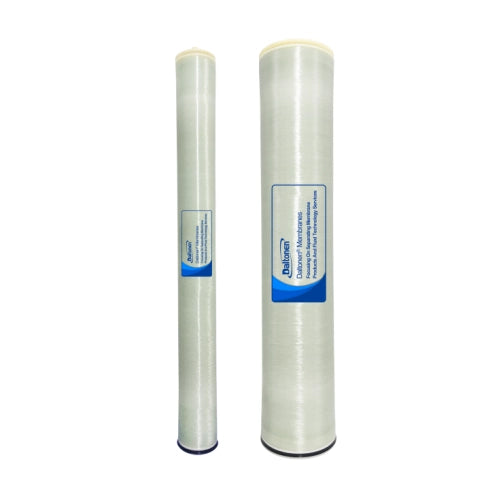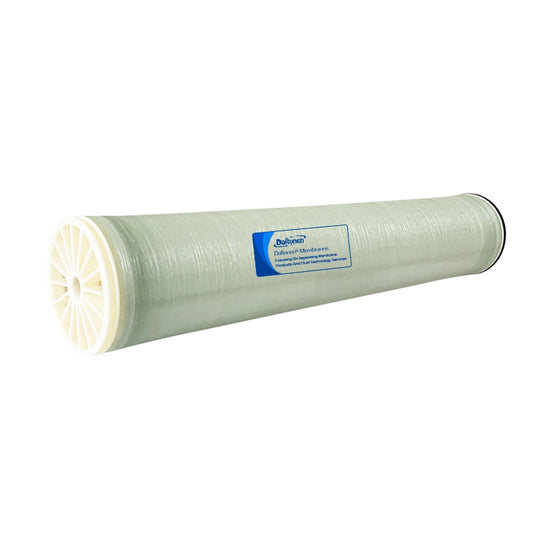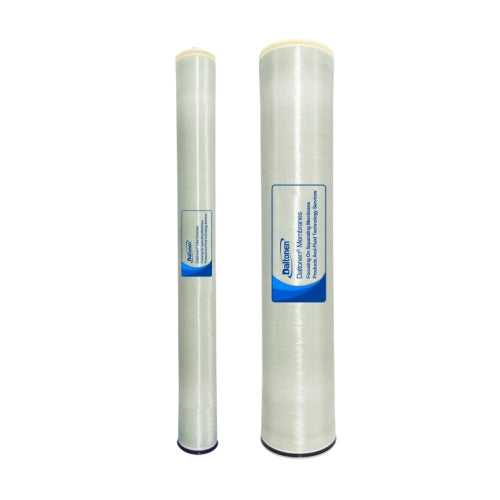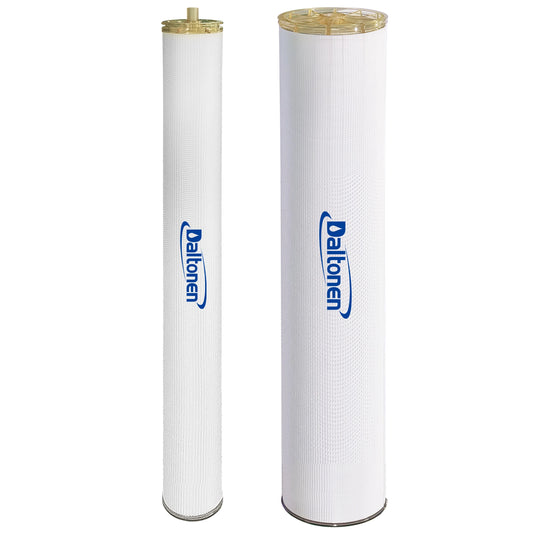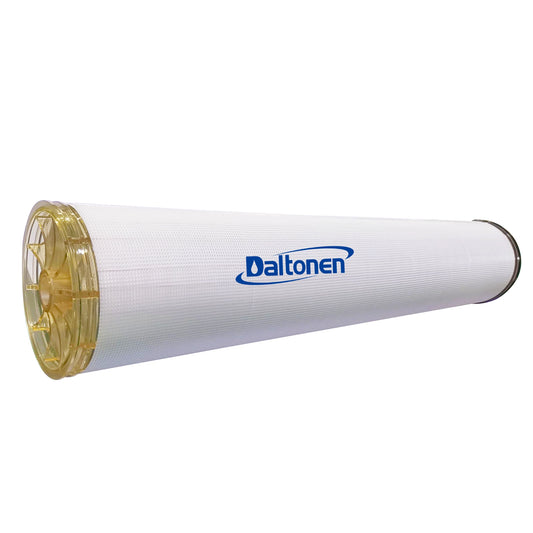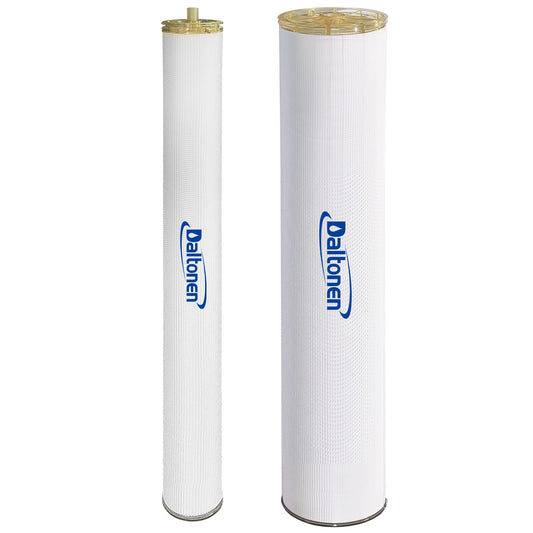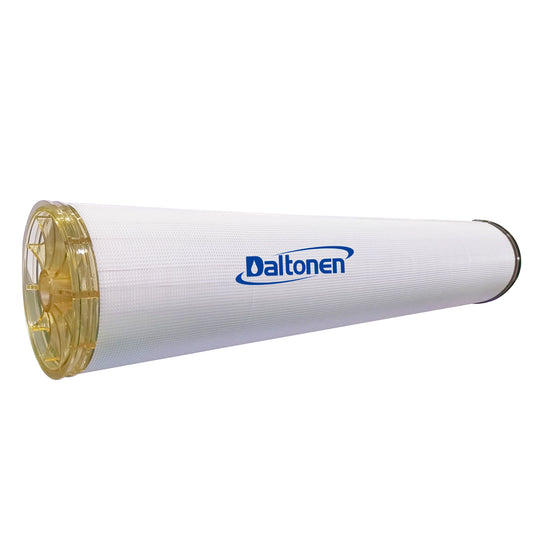Zero Liquid Discharge Reverse Osmosis RO Membrane Treatment Process Scheme for High Hardness Circulating Water in the Chemical Industry
20 May 2025
Zero Liquid Discharge RO Membrane Process for Circulating Water
Pretreatment Stage
Mechanical Filtration
Multimedia Filter: Quartz sand + anthracite filter media (filtration accuracy 20μm), removes calcium carbonate particles of 25-50μm, reduces turbidity to ≤1NTU.
Self-cleaning Filter (accuracy 5μm): Fully automatic backwashing, protects the subsequent RO membrane.
Chemical Softening
Chemical Softening: Add NaOH (adjust pH to 10-10.5) and sodium carbonate (Na₂CO₃) to convert calcium hardness (600ppm) into CaCO₃ precipitation, and use coagulant (PAC 20-50mg/L) to enhance precipitation.
Tubular Microfiltration (TMF): Separates micrometer-sized CaCO₃ particles generated after softening, with effluent suspended solids ≤10ppm.
Scale Inhibition Enhancement
Add high-efficiency scale inhibitor (such as polyacrylic acid, 3-5ppm) to prevent CaCO₃ scaling on the RO membrane surface.

Reverse Osmosis Membrane Treatment Stage
Primary RO System
Membrane Selection: Fouling-resistant brackish water membrane (such as DOW BW30HRLE-440i), tolerates high hardness (Ca²⁺≤600ppm), desalination rate ≥99%.
Operating Parameters:
-
Operating pressure: 1.5-2.5MPa
-
Recovery rate: 75-80% (product water reused in the circulating water system)
-
Concentrate side LSI (Langelier Saturation Index) ≤1.8 (scale tendency controlled by adding acid to adjust pH to 6.5-7.0)
Secondary RO System (Concentrate Re-treatment)
Membrane Selection: High-pressure seawater membrane (such as SW30XHR-440i), tolerates TDS≤70,000ppm, recovery rate 50-60%.
Operating Parameters:
-
Operating pressure: 5.5-6.5MPa
-
Concentrate TDS: Increased to 120,000-150,000ppm, enters the evaporation crystallization unit.
Concentrate Zero Liquid Discharge Treatment
Evaporation Crystallization System
MVR Mechanical Vapor Recompression: Evaporates and crystallizes RO concentrate, recovers industrial-grade NaCl and CaSO₄ solids, condensate reused in the circulating water system.
Drying and Packaging: Salt purity ≥98%, sold as by-products.
System Maintenance
Chemical Cleaning:
-
Every 3 months, clean with 0.1% HCl + 0.1% EDTA for CaCO₃ scaling;
-
Every 6 months, clean with 0.1% NaOH for organic contamination.
Membrane Life Management: Primary RO membrane life ≥5 years, secondary high-pressure RO membrane life ≥3 years.
Brief Scheme Design
Core Equipment Configuration
Pretreatment Unit: Multimedia filter, self-cleaning filter, softening reactor, tubular microfiltration device
RO System:
-
Primary RO unit (BW30HRLE membrane, 6 per pressure vessel, 2:1 arrangement)
-
Secondary RO unit (SW30XHR membrane, 4 per pressure vessel, 1:1 arrangement)
-
High-pressure pump, energy recovery device (PX-220, reduces energy consumption by 30%)
Zero Liquid Discharge Unit: MVR evaporator, centrifugal dryer, condensate reuse pump
Dosing System: NaOH, Na₂CO₃, scale inhibitor, HCl dosing device
Expected Water Quality and Recovery Rate
表格
| Indicator | Raw Water Quality | Primary RO Product Water | Final Product Water (Evaporation Condensate) |
|---|---|---|---|
| Calcium Hardness (ppm) | 600 | ≤5 | ≤1 |
| Total Hardness (ppm) | 1000 | ≤15 | ≤2 |
| TDS (ppm) | 3000-5000 | ≤200 | ≤50 |
| Suspended Solids (ppm) | 25-50μm particles | Not detected | Not detected |
Total System Recovery Rate
-
≥95% (Zero Liquid Discharge)
Technical Advantages and Considerations
Advantages
-
High-efficiency Hardness Removal: Through the "chemical softening + RO" combined process, the total hardness removal rate is ≥99.8%.
-
Zero Liquid Discharge Closed Loop: The RO concentrate is evaporated and crystallized to achieve salt resource utilization, with no liquid discharge.
-
Energy Optimization: The energy recovery device (PX series) reduces the power consumption of the high-pressure pump by 30-40%.
Considerations
-
Enhanced Pretreatment: It is necessary to strictly control the residual CaCO₃ particles after softening to avoid wear on the RO membrane.
-
Scale Inhibitor Compatibility: The scale inhibitor must be compatible with the high-pH softening process (e.g., using alkali-resistant scale inhibitors).
-
Evaporation Crystallization Energy Consumption: The MVR system requires steam or electricity, and it is recommended to use waste heat from the plant to reduce costs.
Economic Analysis
Investment Cost:
-
RO system (including pretreatment): ¥8-12 million (estimated for a scale of 100m³/h)
-
MVR evaporation crystallization unit: ¥5-8 million
Operating Cost:
-
Power consumption: 2.5-3.5kWh/m³ (including energy recovery)
-
Chemical cost: ¥1.2-1.8 per m³
Benefits:
-
Water-saving benefits: Circulating water reuse rate ≥95%, annual fresh water savings of 300,000 tons (calculated at 100m³/h);
-
Salt sales: Annual production of about 500 tons of industrial salt, revenue of ¥100,000-150,000.
Reference Case
Zero Liquid Discharge Project for Circulating Water in a Chlor-Alkali Chemical Enterprise:
Raw water: Calcium hardness 550ppm, total hardness 950ppm, TDS 4500ppm;
Using the "softening + dual-stage RO + MVR" process, data after 3 years of operation:
-
Product water TDS ≤50ppm, calcium hardness ≤1ppm;
-
Salt recovery purity ≥98.5%, annual water-saving cost savings of ¥2 million.
If further optimization of the scheme or equipment selection calculation is required, please provide detailed water quality full analysis data (such as Cl⁻, SO₄²⁻, SiO₂ content, etc.).
Tags:
